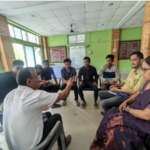Sumi Das
Whenever the question of the overall position of women in India is raised, the answer received is definitely not something to exult in. If statistics are to be taken into account, then the ratio of disparity that exists between the males and the females in most of the sectors is quite alarming with the women acquiring a position way below the required rate. Such disparity characterizes the Pan-India situation with an exception of certain regions where the condition of women is slightly better and it is quite pleasant to know that the North-East India falls within this genre.
Research carried out by the National Sample Survey Organization (NSSO) throws ample amount of light on the fact stated above. The status of women in relation to men can be assessed on the factors comprising of Sex Ratio, Female Literacy Rate, Female Infant Mortality Rate, Gross Enrolment Ratio, Dropout rate and the Role of Women in Decision Making. According to the 2011 census report, every north-eastern state has managed to acquire a decent status as far as the Sex Ratio is concerned,and in the other categories as well the women are doing quite well. The most encouraging fact is that the statistics have improved from the 2001 census and it does leave behind a statement highlighting the progressive stance acquired by the society.
The north-eastern India has a huge tribal population and although the tribal societies have historically been segregated, ironically they have emerged as the section upholding the agenda of equality among the sexes. Customs like Purdah system, rigorously practiced and coerced on women in other parts of the country could not find a solid grip in the north-east and this spared the women of the region from a great ordeal. Purdah system was guided by the motive to restrain the women to only the limited domestic sphere of the immediate family and the near absence of the norm from the north-east suggests that people in this area were not much obsessed with slashing the women folk with a second-class citizen status. In fact, matriarchate is practiced in regions like Meghalaya, particularly in the Khasi tribe where a male, post marriage, takes up the name and the culture of the female counterpart and this particular phenomenon is a rarity in itself. Moreover, a traveler on travelling through the region encounters a substantial number of small scale female entrepreneurs asserting their independence and reinstating the fact that a large section of the north-eastern women are emancipated.
Apart from these small ventures, Cottage industries with the women leading are also a flourishing phenomenon. The year 2013 witnessed the felicitation of twenty distinguished business women by Sreemanta Sankar Mission of Guwahati on the eve of the International Women’s Day and with continuance of the event called “Vasundhara – Celebrating Womanhood” in 2014 and all the NE states involved including Sikkim, it has only grown in stature and evolved into an annual event foregrounding women empowerment. The event was flooded by as many as 84 nominations from across the entire province and the analysis of the nominations revealed that women have, shedding all inhibitions, embarked into the domain traditionally attributed to be the arena of the males.
Atrocities meted out to Indian women are comparatively rare occurrences in the north-east. Female feticide, female infanticide, child marriage and even a blanketing evil like dowry are almost alien to the people here. It is true that as far as the growth of the region is concerned it is not a very prospering state as per the data, however the way the region treats its women, allows the people to be sanguine with a possibility of better prospects in the near future.
The north-east hence unconsciously sets an example for the rest of the nation to follow. However, considering the crimes and the injustice a majority of the women in the country have to endure, the trend should not in turn seep into the region thereby disrupting the promising aspects of development in the times to come. In this context, if the government and the society as well take the onus on themselves for further development, then the baby steps of progression can catalyze manyfold and also restrict the polluting wind coming from elsewhere.







